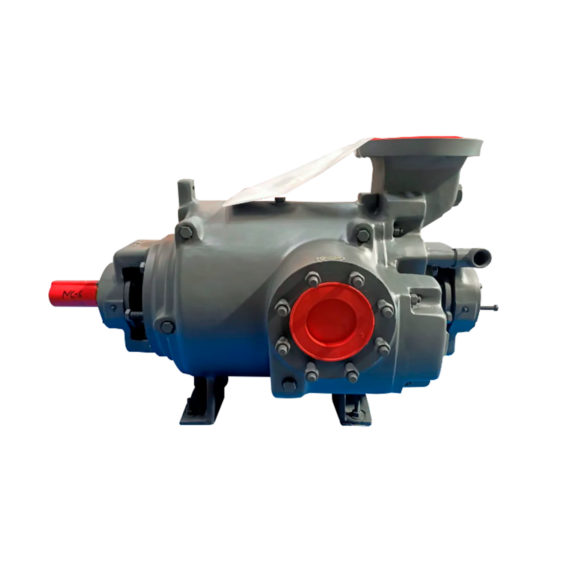
Liquid Ring Vacuum Pump & Compressors for Building Materials
Construction makes use of materials of different sizes, strengths, and specialties. With such a vast array of different qualities required for an equally vast number of potential uses, liquid ring vacuum pumps find their use in all corners of manufacturing building materials.
A CNC machine is handy when working with building materials that need to be cut. By programming the machine, the cutting can be done much more precisely and quickly than if done manually. However, this machine does not blow sawdust off the wooden piece or remove steel shavings from the sheet. Sawdust is hazardous when breathed in and steel shavings can be recycled, reducing waste and production costs as the steel shavings are reused to make another steel sheet, slab, or ingot.
The shavings can be sold in bulk to steelmaking plants that use scrap steel, particularly facilities that utilize electric arc furnaces. To make this possible, vacuum routing tables are implemented as part of the CNC machine. The workpiece is placed and secured on a perforated table and a vacuum pump applies negative pressure on the bottom of the piece. This provides extra security in holding the piece in place and automatically suctions all of the shavings and dust.
For some organic construction materials like wood or bamboo, impregnation is applied to enhance the mechanical or chemical properties of the material, as well as to improve the visual appeal for better marketability. The material is bundled into a chamber where a vacuum is pulled to draw all air out of the cell lumens, which the cell uses to store things like waste. With this, vacuum is formed in the lumens of every cell in the organic material. The chamber fills with an impregnating agent, which is soaked into the material so that the lumen fills with the agent. The agent rushes into the cell because of the low pressure. The material is left to soak until it penetrates through the entirety of the material and vacuum is pulled on the chamber again as it is drained of any excess agents. The vacuum dries out the very outer layer of the material, and the process is complete. This impregnating agent can be hydrophobic, dirt wicking, hard, ductile, strong, etc. Some agents are dyes, and some agents soak underneath wood grains to make the color more saturated, which is desirable for some flooring applications. The process is also used to pressure-treat wood and impart antimicrobial properties to increase the life of the material.
For many structural and aesthetic applications such as helicopter blade manufacturing or wood veneer manufacturing, lamination is an extremely important process. One method of lamination called vacuum bag lamination, or just vacuum lamination, involves placing layers of material and adhesive, collectively called the laminate, within a vacuum envelope. This envelope is placed in a vacuum bag. The envelope is evacuated of air, and the bag is also evacuated of air. The low pressure inside both the envelope and the bag draws the high pressure atmospheric air to the bag, pressing the laminate together. There is no air in between layers of the laminate because of the deep vacuum that has been pulled on the envelope, allowing for more surface area to which the adhesive can be applied. The result is a thoroughly pressed and glued laminate material that is stronger, more durable, or aesthetically pleasing and marketable.
View our Products
Applications of Liquid Ring Vacuum Pumps
The CNC vacuum routing table needs a pump with a very strong, constant suction force and the ability to process small solids like sawdust and steel shavings. These can be potentially abrasive, and etch small cuts into the pump. The dry screw and rotary vane can be tailor-made for this application by use of a filter the process dust is kept at bay from the pumps.
Vacuum impregnation is an application which the liquid ring vacuum pump is able to perform well. The intake of the vacuum pump used is air and impregnating agent, many of which can be corrosive or flammable (like the many liquid resins used to increase mechanical strength). Through proper selection of material, the pump can be built both corrosion-resistant and explosion-proof. The pump performs isothermal compression by design, so the flammable liquid material will be safely passed through the pump. If any external factor causes combustion within the pump, the explosion-proof rating ensures that the explosion is unlikely to spread to the other areas of the plant. The liquid agents that would cause immediate concern in dry-running pumps pass right through the liquid ring vacuum pump as it evacuates all of the air out. The maximum vacuum pressure achievable on a dual-stage liquid ring vacuum pump is 28” Hg, which is sufficient for evacuation of cell lumens.
The constant theme of constant suction as an advantage is present in the process of vacuum bag lamination as well. The pump needs only to perform a simple task: air in, air out. The pump is to evacuate all of the air in the bag for a sustained period of time until the adhesive cures. The only issue is that the vacuum needs to be strong enough that there is as little air between the laminate layers as possible, and it would be ideal for there to be a complete vacuum in the bag. Both of these qualities are present in the liquid ring vacuum pump, reaching near-vacuum conditions for sustained periods of time without any stops or breaks in its stroke cycle. Some pumps cannot continually draw air out of the bag because of the way they are designed, that they have a chronological order to their stroke cycle. The liquid ring vacuum pump holds its chambers through the walls of the impeller and the outer liquid ring. The intake happens in one chamber while the expansion, compression, and discharge happen simultaneously in other chambers.





